One of the most popular houseplants is jade because of its beautiful appearance. Let’s discuss different jade plant types.
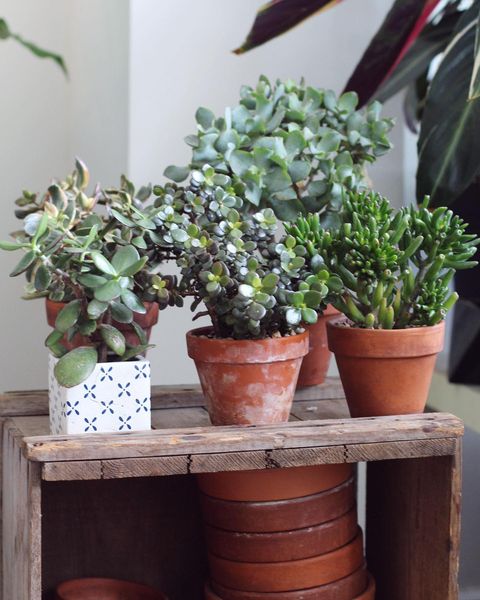
Scientific Name: Crassula Ovata
Common names: Jade Plant, Money plant, Money tree, Lucky plant, Lucky jade
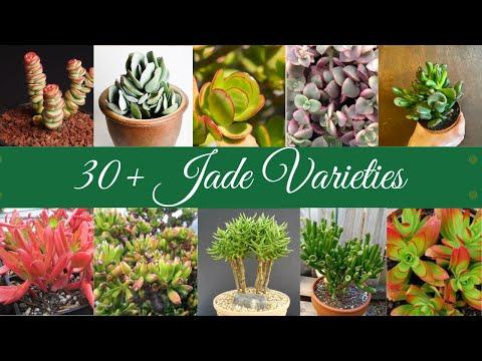
What Plants Share Jade Plant’s Name?
The name jade plant most often refers to a plant with the Latin name Crassula Ovata. Still, crassula ovata shares the name jade plant with many other species from the genus Crassula, which includes more than 300 species and differs significantly in appearance from what is ‘original’ a jade plant crassula ovata.
The Latin name of the genus comes from the word Crassus, which means thick, associating the plant’s leaves since all plants have thickened, fleshy succulent leaves that grow on short stems.
Origin Of Crassula Jade Plants
Although plants from the Crassulaceae family grow throughout the globe, most of the cultivars we grow in our home are native to South Africa.
However, they arrived in Europe and America more than a hundred years ago, and the ease with which you can grow them, the various and exciting forms, and leaf colors have made them one of the most popular houseplants.
Crassula Jade Plant Flowers
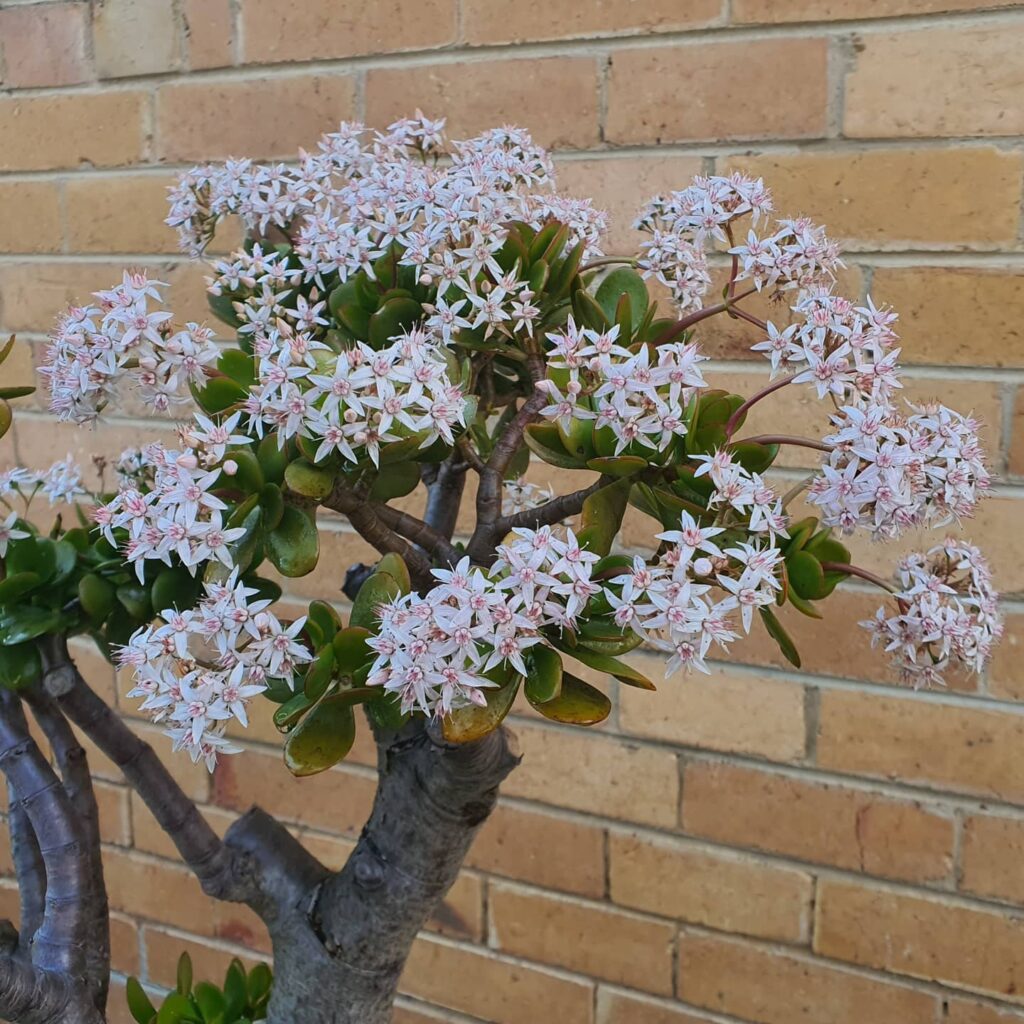
All plants of this genus are flowering plants that give tiny, star-like, pink or white flowers gathered in an inflorescence on long and firm stems, depending on the species and variety.
Most of them bloom in autumn or early winter, but some species bloom in summer or spring. Unfortunately, many of the plants we grow in the house rarely bloom.
The absence of flowering is often the result of inappropriate conditions, primarily insufficient light or improper temperatures. In addition, only mature plants can bloom, and it takes a lot of patience.
Jade Plant Symbolism
According to Feng Shui teaching, the Jade plant Crassula Ovata is one of the most famous healers of negative energy, which will bring prosperity to your home and attract money and wealth.
The plant bears the common name Good luck plant or Money Tree with reason since the symbolic meaning of the plant and its positive impact on the household is generally accepted in all parts of the world.
For example, in the eastern tradition, it is customary to gift this plant at weddings for newlyweds to spend life in happiness and have plenty of money.
Also, the legend says to place the jade plant on the right side of the front door or in the southeast room corner for the best effect!!
How To Grow Jade Plants?
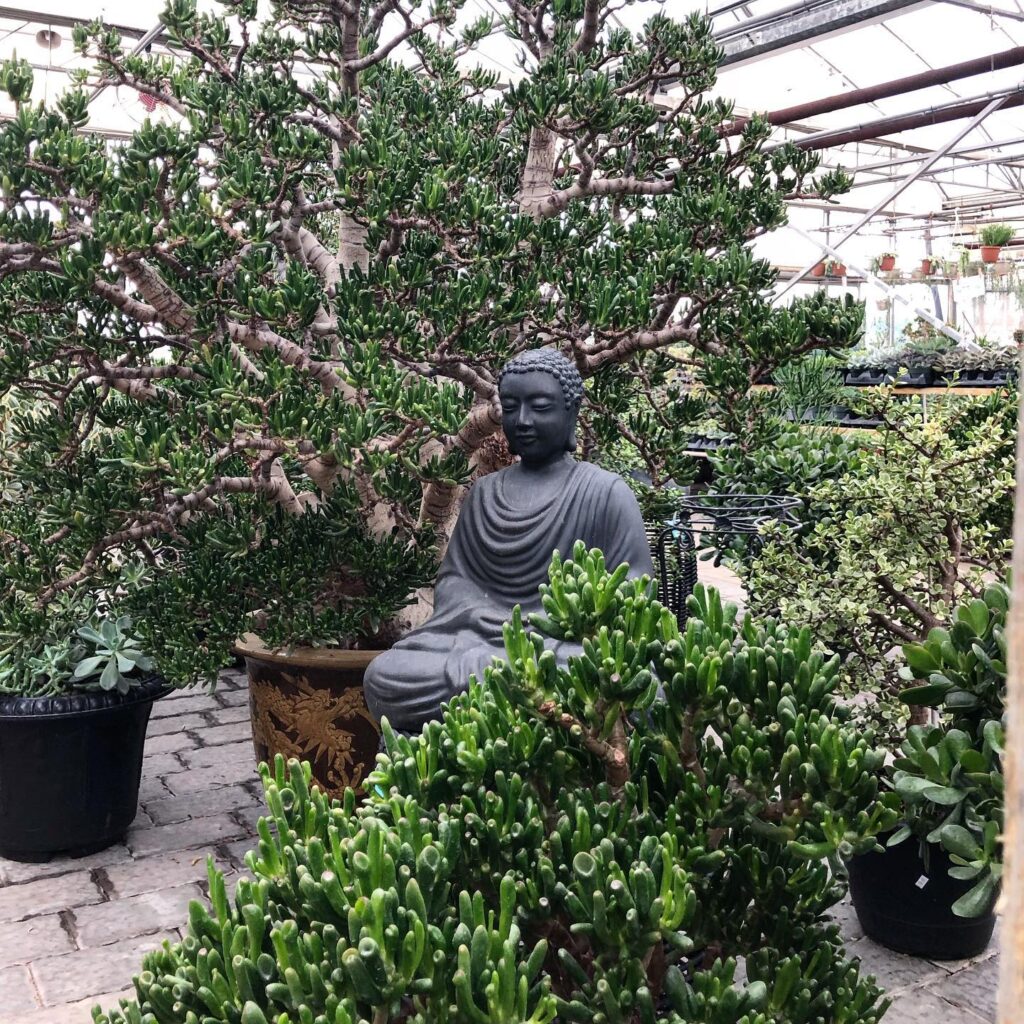
The beautiful plant that we can often see shaped in gorgeous bonsai tree form is one of the simplest plants to grow at home. In addition to excessive watering, it successfully copes with standard indoor conditions and will forgive you for occasional neglect.
Generally, pests and diseases-free, adaptable, and drought-tolerant, it is an ideal plant for beginners and experienced growers.
Watering
When it comes to watering, you have to remember that Crassula ovata and other plants of this genus are succulents that deposit water reserves in the leaves of stems and even roots. It means that they can survive long dry periods with little or no precipitation.
Therefore, you should try to establish an appropriate watering rhythm according to your plant’s needs since too much water can cause the leaves to fall off, and too little water can cause the leaves to wrinkle.
Generally, in summer, it is enough to water it once in 14 days, allowing the substrate in the pot to spill between two irrigations. In winter, the plant is dormant, so do not water it more than once a month.
However, it is best to check before watering the plant with your fingers that the soil is dry to a depth of one ounce in small or two inches in larger pots.
It is important to use soft water, such as distilled water or rainwater, and pour it directly under the root.
Fertilizing
Jade plants love mineral soil but do not like the addition of chemicals and mineral fertilizers.
Therefore, you can fertilize the plant once a year with liquid fertilizer for cacti and most often before flowering to encourage flower opening.
Winter supplementation and aggressive fertilizers are something you should avoid.
Soil
The Jade plant has a relatively small and not too branched root, so it does not need a container of large capacity.
It thrives in well-drained soil in which water does not stay long. The ideal choice is a ready-made substrate for cacti and succulents with a slightly acidic reaction of pH 6.
If you do not have such a substrate, you can prepare a hand-made blend of equal parts of standard substrate for pots, coarse sand, and perlite or pumice.
But regardless of the type of soil in which you will plant your jade plant, the pot must have a drainage hole through which you will lay a layer of broken tile or coarse gravel.
This layer will allow water to drain even when the soil mixture is not ideal.
Propagation

You can propagate all types of jade plants by leaf or stem cuttings.
If you opt for leaf propagation, take a healthy and mature leaf and place it in the ground with the lower part attached to the stem.
It takes about a month to take root, during which you should water it moderately.
If you opt for stem cutting, cut the woody stems with a sterile knife along the trunk, choosing a branch two to five inches long.
It takes two days to air dry and put in a mixture of earth and sand. You should water the installation during the next four or five weeks.
Temperatures
Since the jade tree is originally from Africa, it prefers a warm and dry climate. It grows as a potted houseplant that overwinters in frost-free areas with optimal 50 to 60 F temperatures in the continental climate.
If you live in USA climate zones 10 and 11, you can plant jade trees in the garden. However, it does not tolerate temperatures below 32 F, so it would be helpful if you apply the mulch protection for the root in the case of sudden temperature falls.
Light
Like other succulents, the jade plant is a sun lover, adapted to warm climates with lots of suns and little water.
It grows best if it gets at least six hours of bright light every day, although it can handle a partially shaded position.
However, most plants that do not get enough light will not develop lovely red margins on the leaves, may lose their shape and might never bloom.
However, only mature and well-established plants can cope with all day long direct sunlight. In other words, place young plants on the spot with many indirect suns, while you can keep adult specimens in slightly sunnier places.
Types Of Jade Plants
As already mentioned, the term Jade plant is a generally accepted name for many succulent plants. Therefore, below we bring you a popular species of jade plant, Crassula ovata, including other species that share this name.
Crassula Ovata Baby Jade Plant

The Baby Jade plant is an evergreen succulent shrub that usually grows in the shape of a small tree. Its natural habitat can reach a height of up to seven feet, but indoor plants typically reach up to five feet high and a maximum canopy width of up to two feet.
The stem is erect and straight, brown and cracked bark, and the branches are short and thick, usually green until their bark is woody.
Oval, smooth-edged, fleshy, and shiny leaves can grow up to two and a half inches.
The plant blooms from August to October, producing clustered white-pink or pure white flowers with five petals.
Bear Paw Jade (Crassula Pubescens)
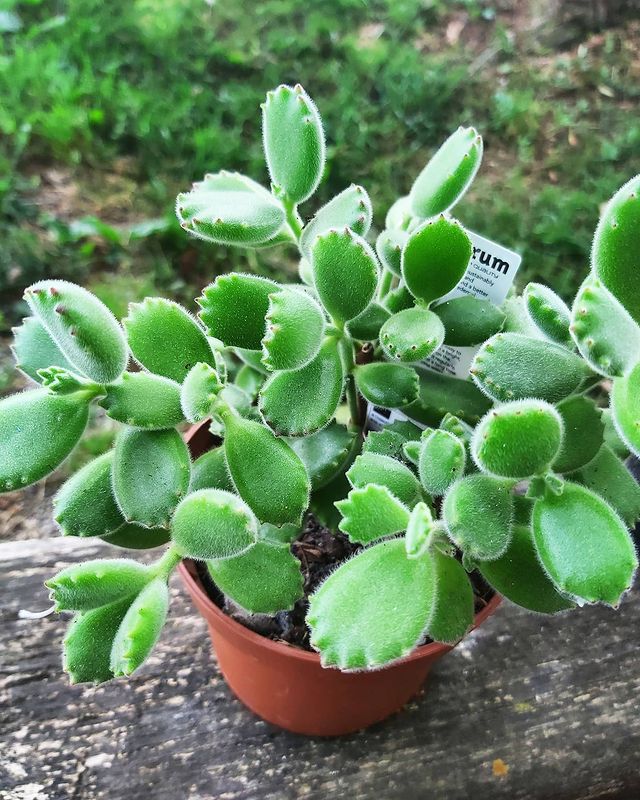
Crassula pubescens or bears pow jade is a small mat-forming, bushy succulent plant with erect stems that grows up to 15 inches tall. This lovely plant has bright green fleshy leaves covered with hairs serrated along the upper edge and resembles a bear’s paw.
Each leaf may have three to ten teeth that take on a deep red color in the sun.
The plant can bloom with beautiful orange bell-shaped tiny flowers that grow on a stalk above the rosette of leaves in the spring.
If you want to stimulate the plants to bloom, place them in very bright light during the winter and fertilize them in early spring using a liquid fertilizer with a high phosphorus content.
Crassula Ovata Harbor Lights
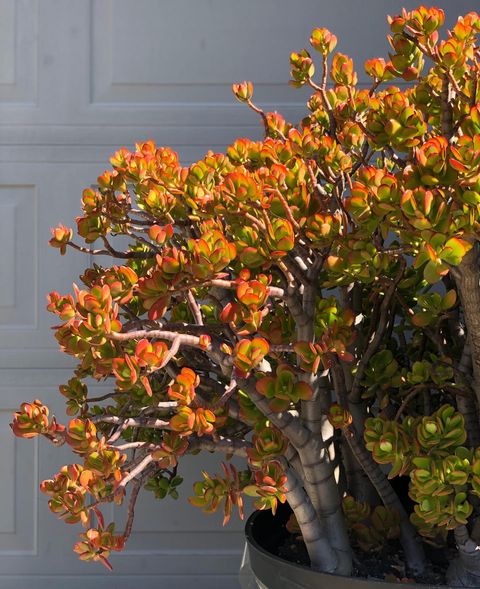
Crassula ovata harbor lights have green plumped oval-shaped leaves that are slightly smaller than the leaves of other ovata jade plants. The leaves of entire rounded edges have red tints that become deeper in the winter months and grow on long woody stems.
At first glance, this plant resembles botany bay, but the red hue on the leaves is more pronounced, and the plant is modest in size overall.
Like other jade plants, crassula ovata harbor lights bloom in autumn or early winter with delicate pink flowers.
Crassula Ovata Hobbit (Trumpet Jade Plant)
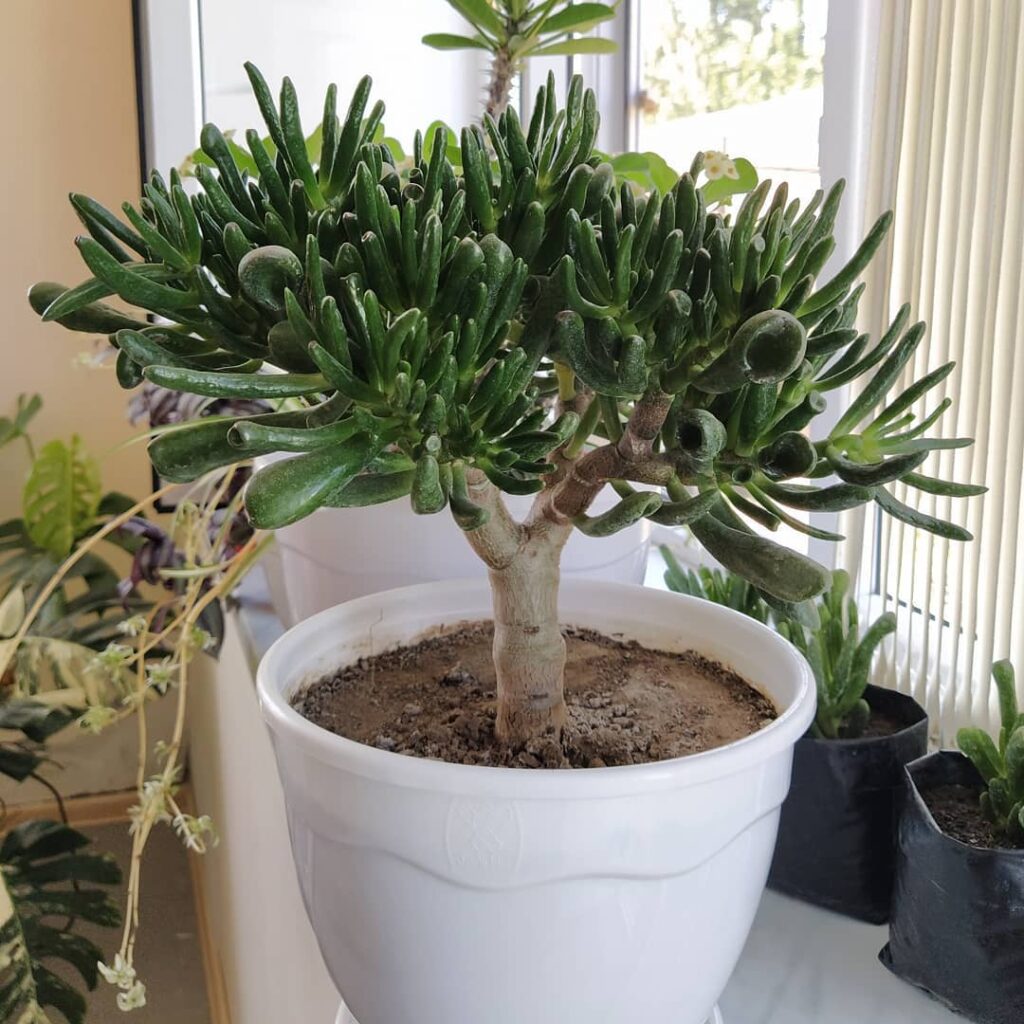
If you are looking for a unique money plant, you should consider purchasing the Crassula Ovata Hobbit variety!
This particular type of jade plant has unique tubular jade-green leaves with red tips, and its other names include Ogre’s Ear, Hobbit Jade, Hobbit’s Foot, Finger Jade, and more.
It is a slow-growing species of jade plant, but still, over the years, it can grow two or three feet tall and two feet wide. Each unusual leaf reaches a maximum length of two inches, and the foliage grows densely strung on thick woody stems.
This type is excellent for shaping a jade bonsai tree, and the bonus is the white flowers that adorn it in the second half of the year.
Gollum Jade Plant (Crassula Ovata Gollum)
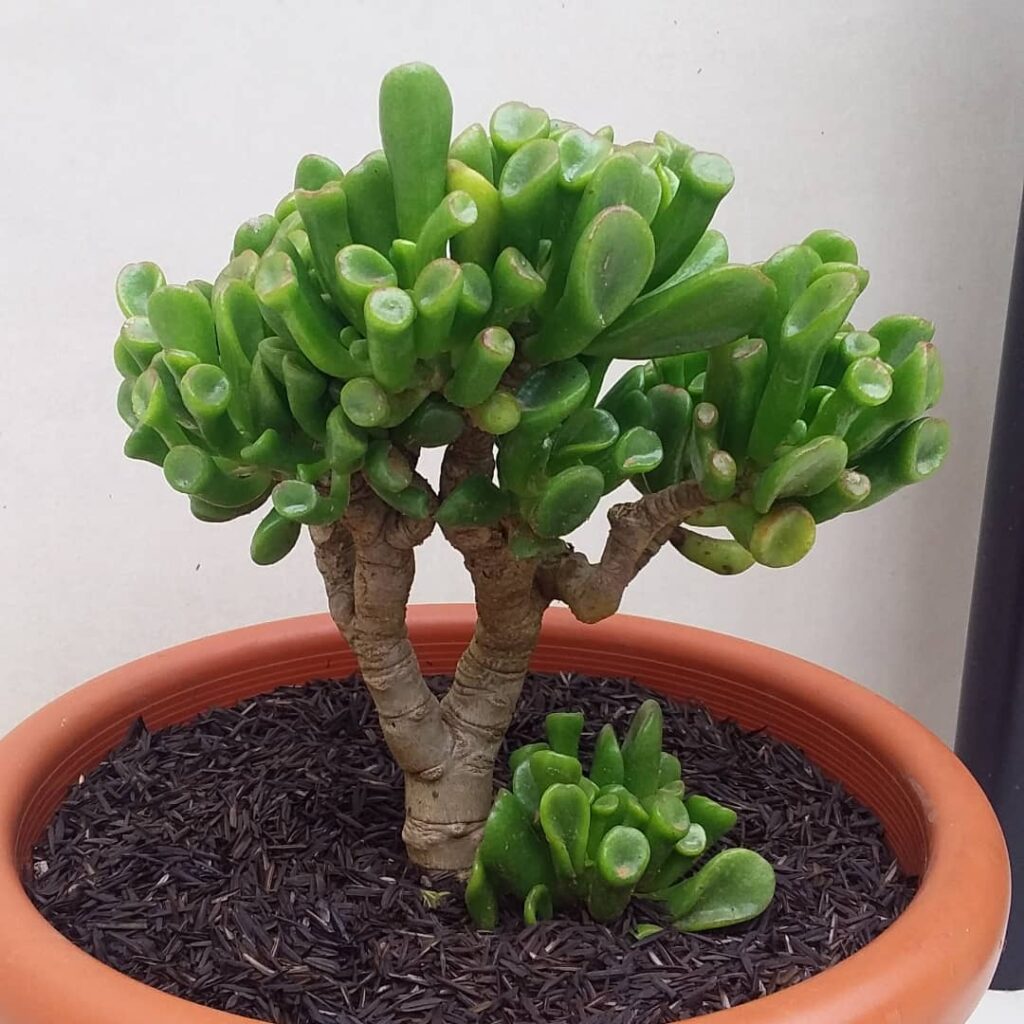
Another option for lovers of unusual jade plants, Gollum jade or Crassula ovata ‘Gollum’ is very similar to the previous type of jade plant Crassula ovata ‘Hobbit.’
Both plants have unusual tubular green leaves with red tips and grow in a small jade tree form. The main difference between these two varieties is that the leaves are more oval and flatter in Hobbit varieties. In contrast, light jade green foliage in Gollum varieties is more tubular and narrower.
Variegated Gollum Jade Plant
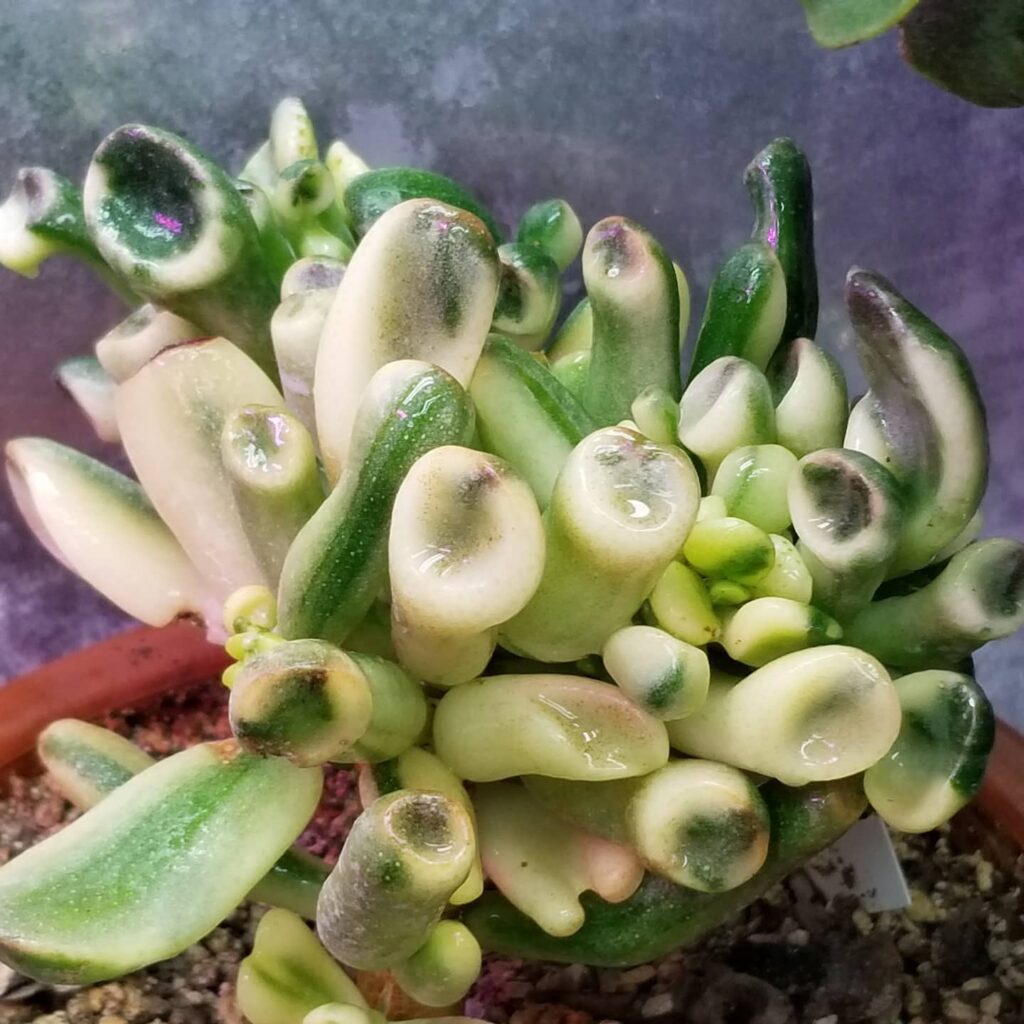
While Gollum jade and Hobbit jade may be pretty similar, the variety of variegated Gollum jade plants is easy to identify! It is one of the few jade plants whose lime green leaves are interspersed with yellow or cream-yellow spots and lines.
All three varieties are known as Finger jade and are approximately equal in size and shape. Variegated jade plant and its monochromatic relatives grow to two or three feet in height and width.
New leaves grow at the top of the stem, while the older leaves from the lower part closer to the root fall off when they wither, naturally forming a tree-like shape.
Crassula Ovata Botany Bay
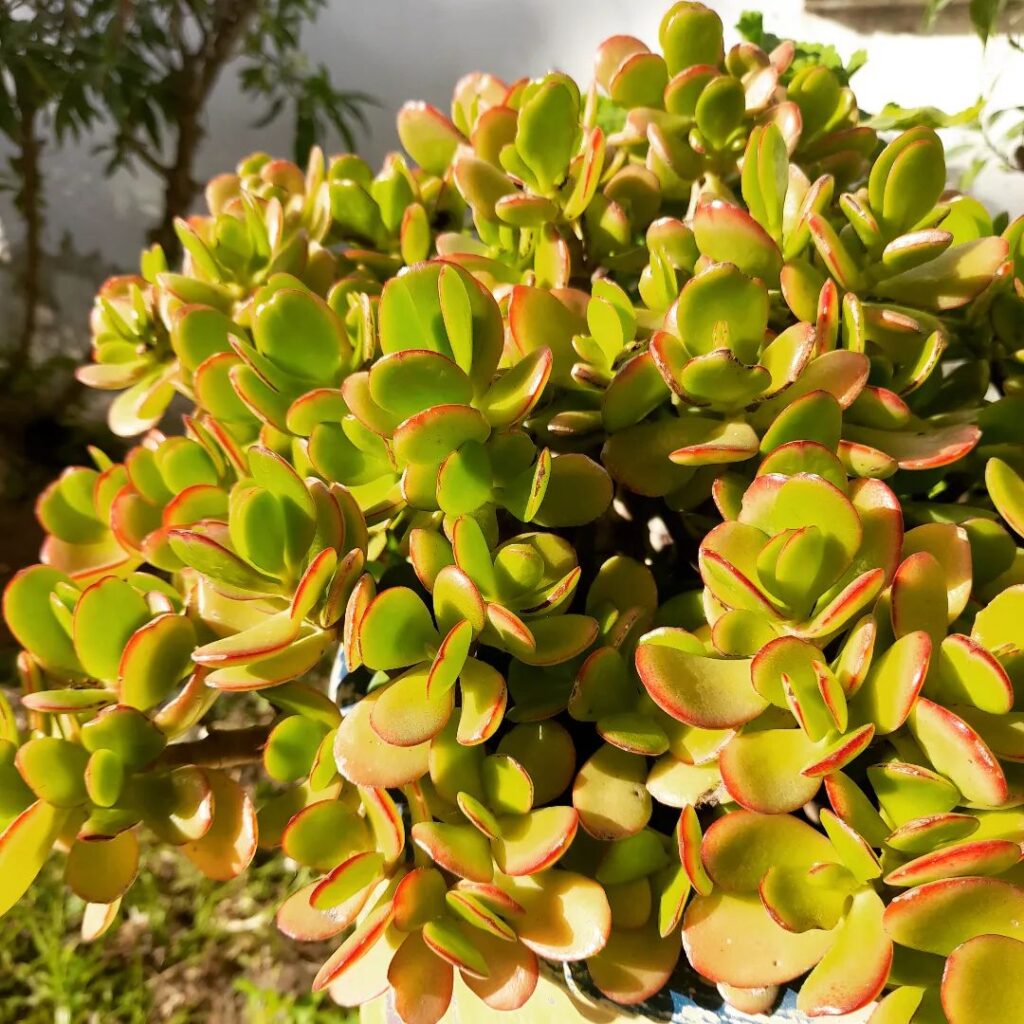
Crassula ovata Botany bay variety appeared on the market in 2011 and quickly gained fans due to its compact, bushy shape and shiny lime-green leaves with reddish edges.
This fast-growing species reaches a maximum height of 5 feet within five years while remaining equally dense and compact, without permanent pruning.
In late fall and early winter, the plant produces starlike flowers. They are tiny, just half an inch across, usually pinkish-white in color.
Crassula Ovata Pink Beauty

Crassula ovata, Pink beauty, or Pink jade, is named after the beautiful foamy and refined clusters of pink flowers that grow above the foliage on solid upright stems.
The Pink jade plant variety is another type of money plant with a compact, bushy shape that grows three feet tall and the same height. With adequate lighting, the plant has fleshy light green leaves with a red edge and a soft orange ombre, which contributes to its decorativeness.
Crassula Ovata ‘Hummel’s Sunset’ (Golden Jade Tree)
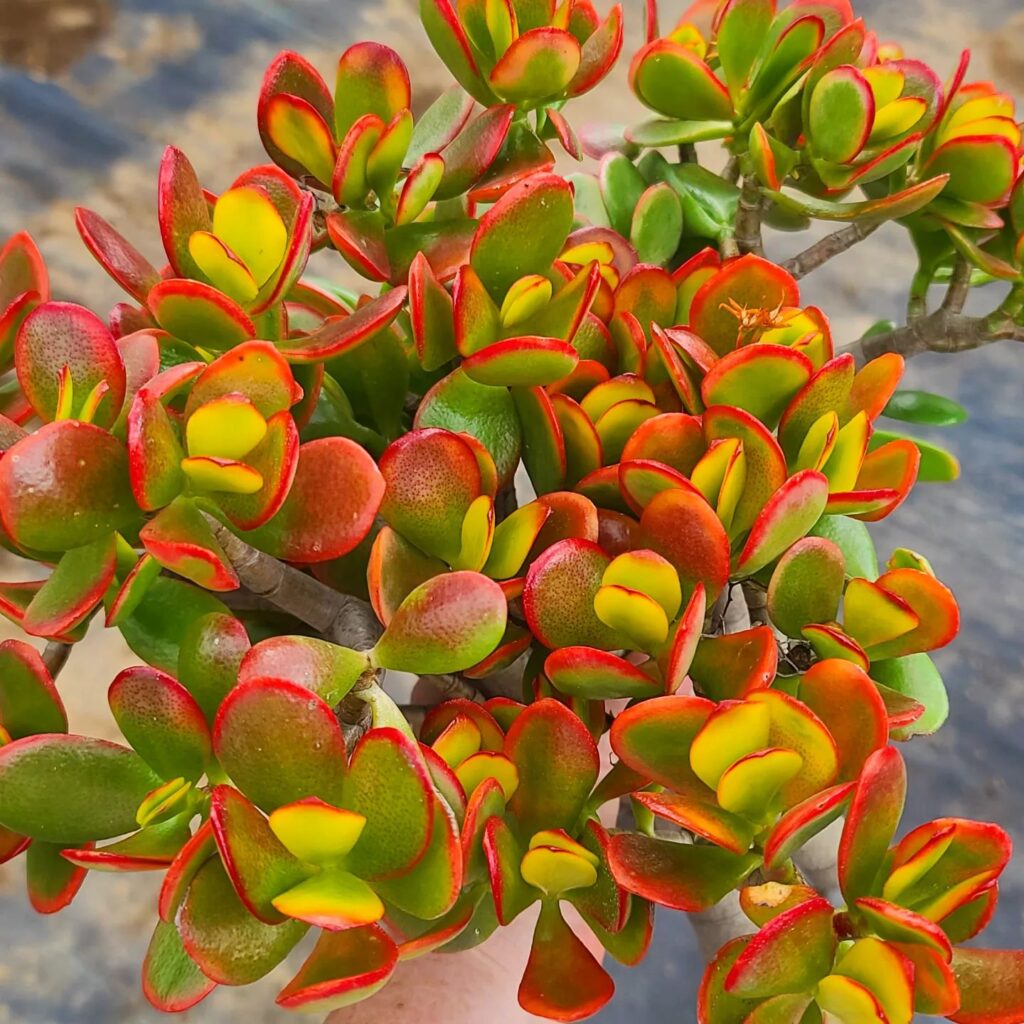
Crassula ovata Hummel’s Sunset, commonly named Golden Jade Tree, is another excellent, dense, bushy jade plant variety that stands out among other types of jade plants due to the gorgeous golden hue of its small round plumped foliage.
The golden jade money plant grows three feet, and you can easily shape it into a bit of a jade tree.
Its fleshy green leaves with yellow tones, especially pronounced in the colder months, contrast with dark red stems, creating a striking colorful sight.
Red Jade Plant (Crassula Ovata Obliqua ‘California Red Tip’)
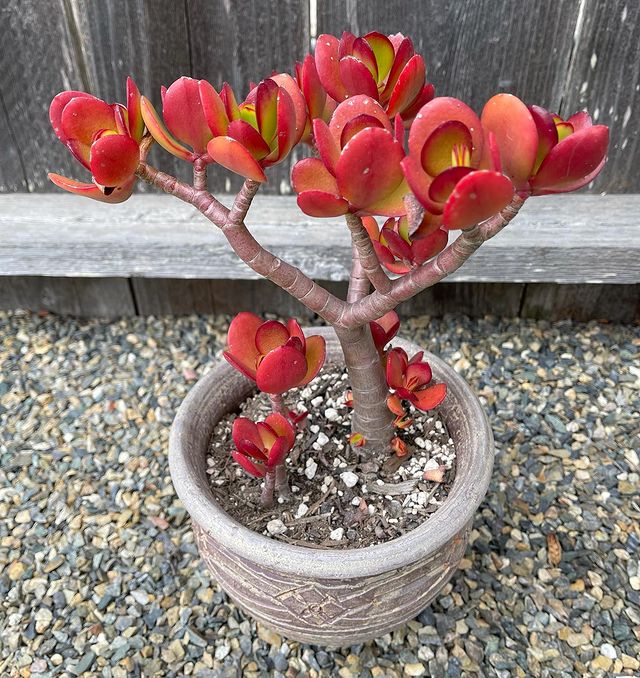
Although all plants from the group of crassula ovata have glossy, fleshy rounded leaves on which you can see the red border when exposed to the sun, crassula ovata oblique ‘California red tip’ raises the level of color to a new level! Namely, if it grows in suitable conditions with a few hours of direct sunlight, the leaves of this plant get distinct red tones on the rounded tops, most exposed to the sun, while the base of the leaves remains light green. This play of green and red tones and toppings makes the plant incredibly decorative.
In areas with warm winters like southern California, this plant can be grown in the garden as a small tree and even a hedge because it can grow up to nine feet. It rarely grows more than three feet as a potted plant, but as with other crassula ovata, it grows slowly and takes many years to reach its maximum size.
Dwarf Types Of Jade Plants
Dwarf types of jade plants include plants from the Crassulaceae family that grow significantly less than their large relatives or original jade plants.
From the rich offer of these sympathetic plants, we have singled out a few of the most notable species.
Crassula Ovata ‘Minima’
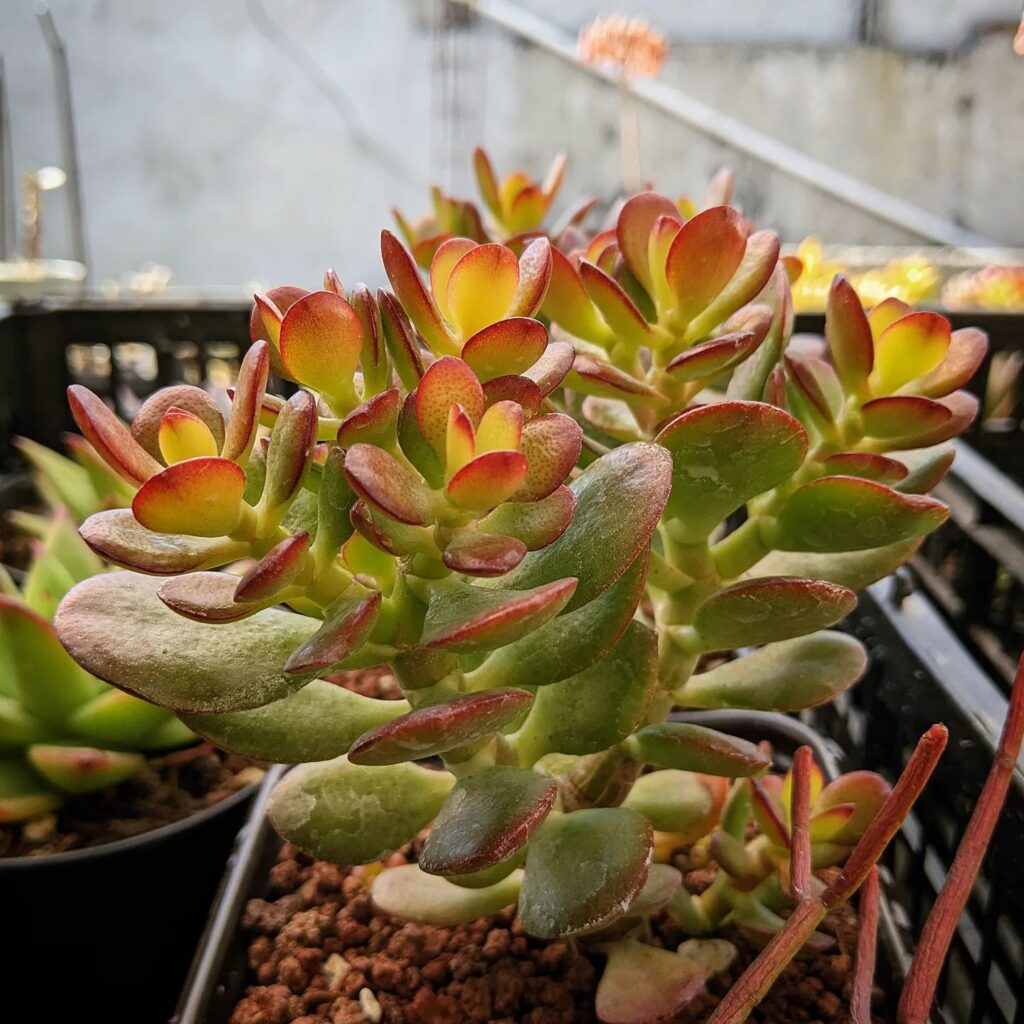
Often called Miniature Jade Plant, crassula Ovata Minima is a lovely dwarf variety of ‘original’ jade plants. It has a thick trunk and purple or pink-colored stems bearing round, fleshy light green leaves with red tips.
By regular pruning, you can easily control its size or shape since this procedure stimulates the development of new stems.
Young plants one or two years old do not bloom. However, when the plant reaches maturity, which is usually after five or six years, the plant could be adorned with tiny pink flowers. Flowering is worth waiting for because the blossoming of the Minima is a truly spectacular sight.
Crassula Ovata ‘Crosby’s Compact’
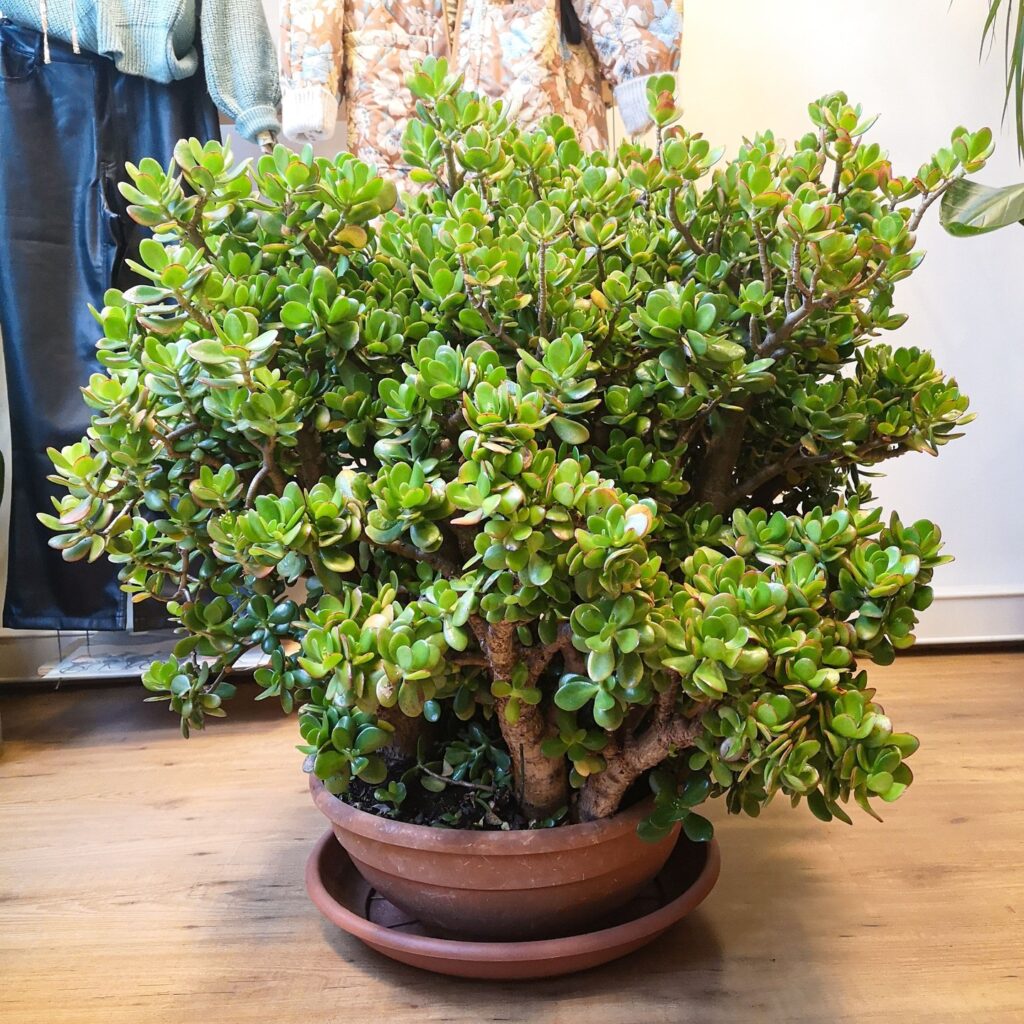
Crassula ovata ‘Crosby’s Compact’ is another type of money tree plant that remains a compact and sizable indoor or outdoor plant for years.
Generally, its leaves are smaller and the stems shorter than in other jade plants but are equally emerald green and fleshy, and the whole plant is reminiscent of the little jade tree.
However, if you take it outside in the warm part of the year to a position where it will get some direct sun, its leaves will take on an intense and very decorative red hue.
Although its form of a bit of jade tree is attractive, whether it blooms or not, its beautiful white or tiny pinkish flowers can appear in early spring or late winter.
Yet, some plants never bloom no matter how long you have them, especially those that spend the winter months in warm living rooms.
Dwarf Jade Plant (Portulacaria Afra)
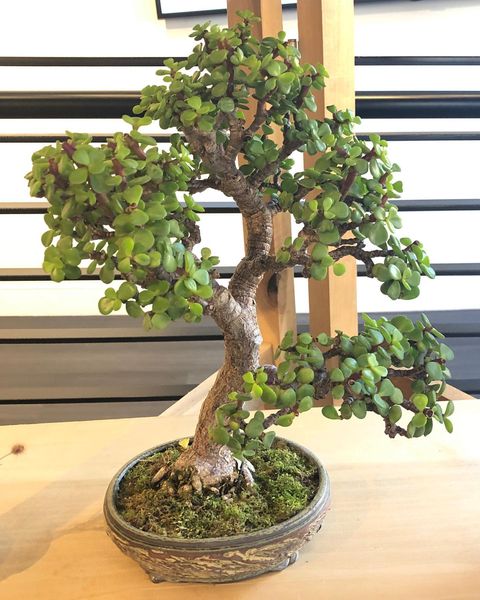
Although often called the Dwarf jade plant, Portulacaria Afra is not a jade plant variety, does not belong to the same genus, nor is it related to crassula plants.
However, when you see the plant, it is clear why it is easy to mix it with other jade plants. Afra is also a succulent plant with small oval, glossy green leaves that grow on decorative red stems forming a Bonsai form of a small jade tree.
In addition to the name Dwarf Jade Plant, you can find the plant under many terms: Miniature Jade, Spekboom, Trailing Elephant Bush, Porkbush, Elephant Plant Elephant’s Food, Small Leaf Jade, Rainbow bush, or Green penny jade.
Like other succulents, this is an easy-to-maintain plant. It is essential to provide it with porous soil, enough sun, and not water it too often because it does not like to sit in moist soil.
Yellow Rainbow Bush (Portulacaria Afra Aurea)
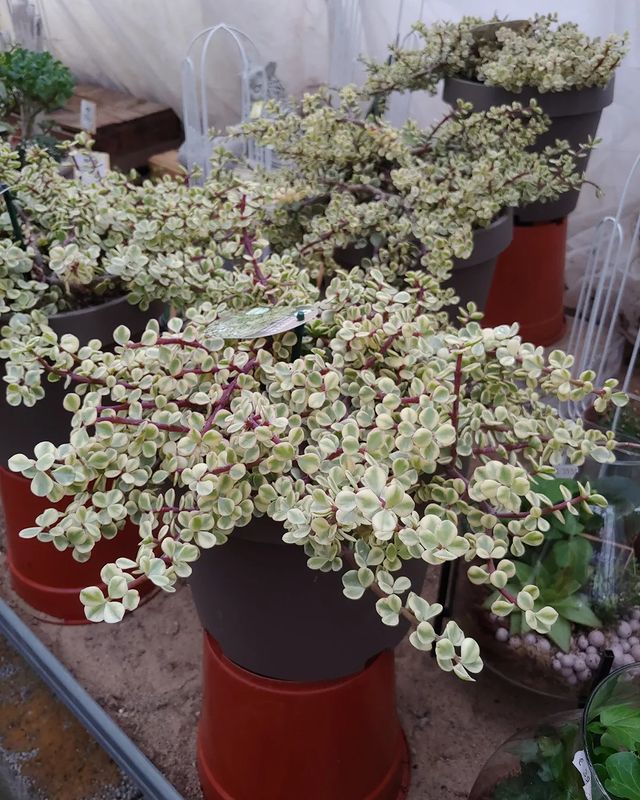
In addition to the charming look of its green variant, the yellow rainbow bush has another trump card: Its tiny round leaves are interspersed with creamy white and yellow shades!
If you add branched pink stems, you will get an extremely decorative plant with a filigree look that is not difficult to maintain!
Yellow rainbow bush is a small, slow-growing plant that reaches 10 to 15 inches in height and the same width. In nature, this plant forms low ground-cover colonies, and some varieties even have creeping stems and can grow in hanging pots.
Since it is not an ‘original’ jade plant, the light green, variegated leaves do not have red tips, which do not diminish its beauty. On the contrary, the plant forms an alluring variegated canopy whose color intensifies if the plant gets a few hours of direct sunlight a day.
Crassula Tetragona (Miniature Pine Tree)

This drought-tolerant small lime green succulent from the Crassulaceae family grows 12 inches high and wide.
Its common name best describes the plant’s appearance because it resembles a small pine tree! The fleshy oblong leaves are narrow and pointed at the top, growing upwards like pine needles.
But, unlike pine, the Miniature Pine tree is a flowering plant that will delight you with bunches of tiny white flowers that appear in the spring.
Trailing Jade Plant (Kleinia Petraea or Senecio Jacobsenii)
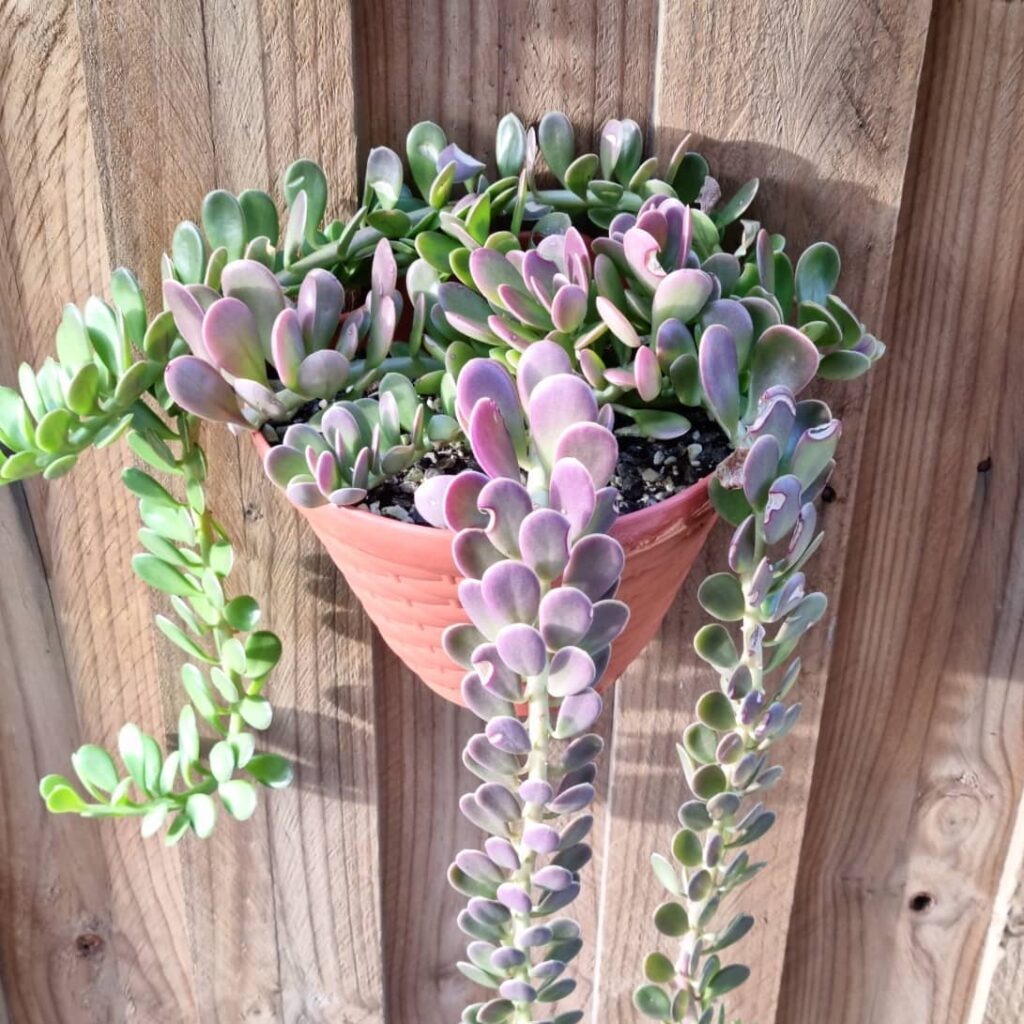
Originally from Tanzania and Kenya, the trailing jade plant or Kleinia Patreae is another beautiful and undemanding succulent species.
Despite its common names, such as trailing jade, vining jade, or weeping jade, this plant does not belong to the genus crassula, but it looks like some types of jade plants, so it is clear how this ‘botanical confusion’ came about.
The plant grows as a creeping ground covered with long stems that take root when contact with the soil. Therefore it is an excellent plant for hanging baskets where its long branches can form cascades up to four inches long!
Its flat, spoon-like, light green leaves may resemble crassula ovata leaves but grow significantly and measure up to three inches in length.
Additionally, the leaves that grow vertically overlapping on the stem, like shingles, get beautiful purple tones in winter.
Variegated Trailing Jade Plant (Crassula Sarmentosa ‘Comet’)
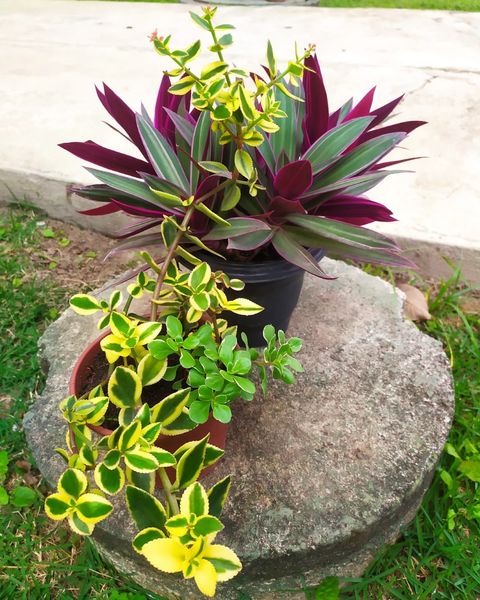
The variegated trailing jade plant is a name that shares several different jade-like plants with weeping habits and two-tone greenish-white or greenish-cream leaves in different patterns.
Along with the plant Senecio Jacobsenii Variegata, a yellow-green variegated jade plant variety of the above described green trailing jade, this name most often refers to Crassula Sarmentosa Comet, a beautiful creeping succulent.
The leaves of this plant are slightly serrated, small, one inch long, oval with a pointed tip, and grow opposite in pairs on reddish-purple stems up to three feet long.
The middle of the leaf is medium green, and the edges are wide yellow with a thin red margin that occurs if the plant is grown in full sunlight.
Silver Jade Plant (Crassula Arborescens)
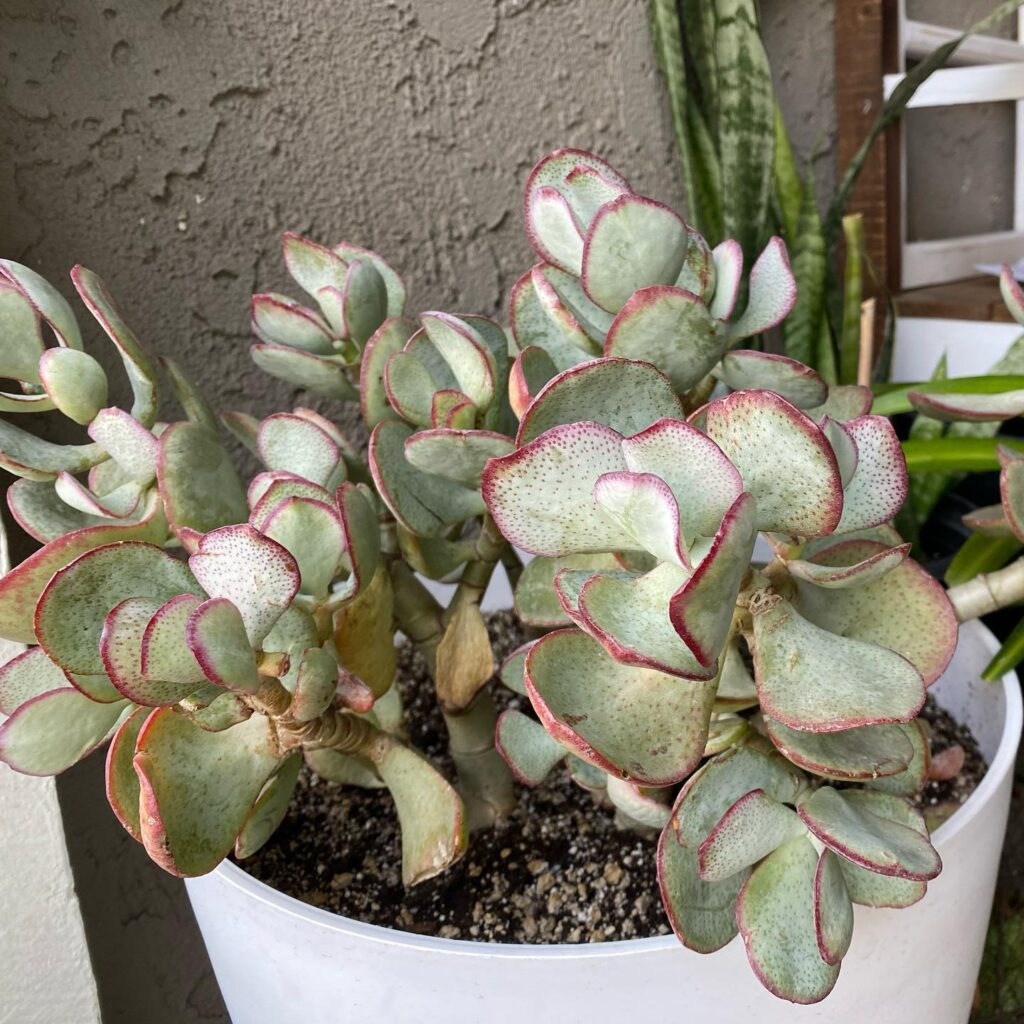
The Silver jade plant (Crassula Arborescens) is an eye-catching type of jade plant, whether grown as an individual plant or combined with other green vegetation. Simply, it’s hard not to notice its round, disk-like, plumped grayish-green leaves bordered by a reddish line.
However, even among these silver beauties, the bluebird variegata stands out among the silver types of jade plants because its leaves are additionally decorated with irregular yellowish or egg-shell tones.
This stunning little jade tree has numerous names, including Bluebird jade, Silver Dollar Jade, Blue Bird Money Plant, Blue Buddha Bush, etc.
On average, crassula arborescens grows four to five feet in height and width, and in spring and summer, it blooms with white clustered flowers, typical for all types of jade plants.
Ripple Jade Plant (Crassula Arborescens Undulatifolia)
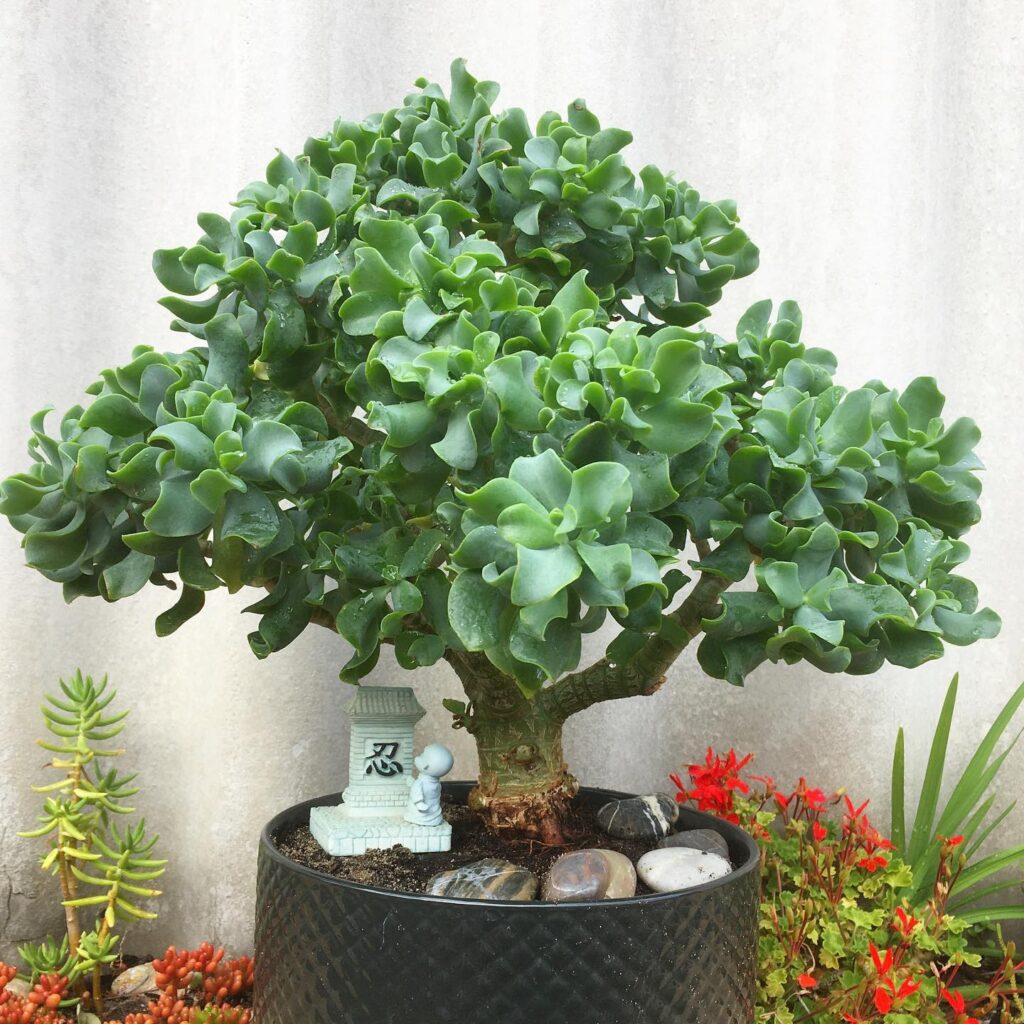
Easily recognizable among the types of jade plants, Ripple jade plant or Crassula Arborescens Undulatiofolia has characteristic curled grayish-green leaves.
Curly jade plant is a compact type with a maximum height of three or four feet, as much as it can grow with proper care.
Ripple jade forms a dense bush or Bonsai tree structure with a charmingly messy canopy. Planted outdoors where the climate conditions allow, it blooms with clustered white flowers.
Indoor plants, unfortunately, do not often bloom, especially in the northern hemisphere, mainly due to a lack of light during the short winter days.
Thick, twisted leaves with slightly pronounced tips that grow on sturdy stems can have purple margins if you keep them in a place with a lot of morning or afternoon sun.
Propeller Plant (Crassula Falcata)
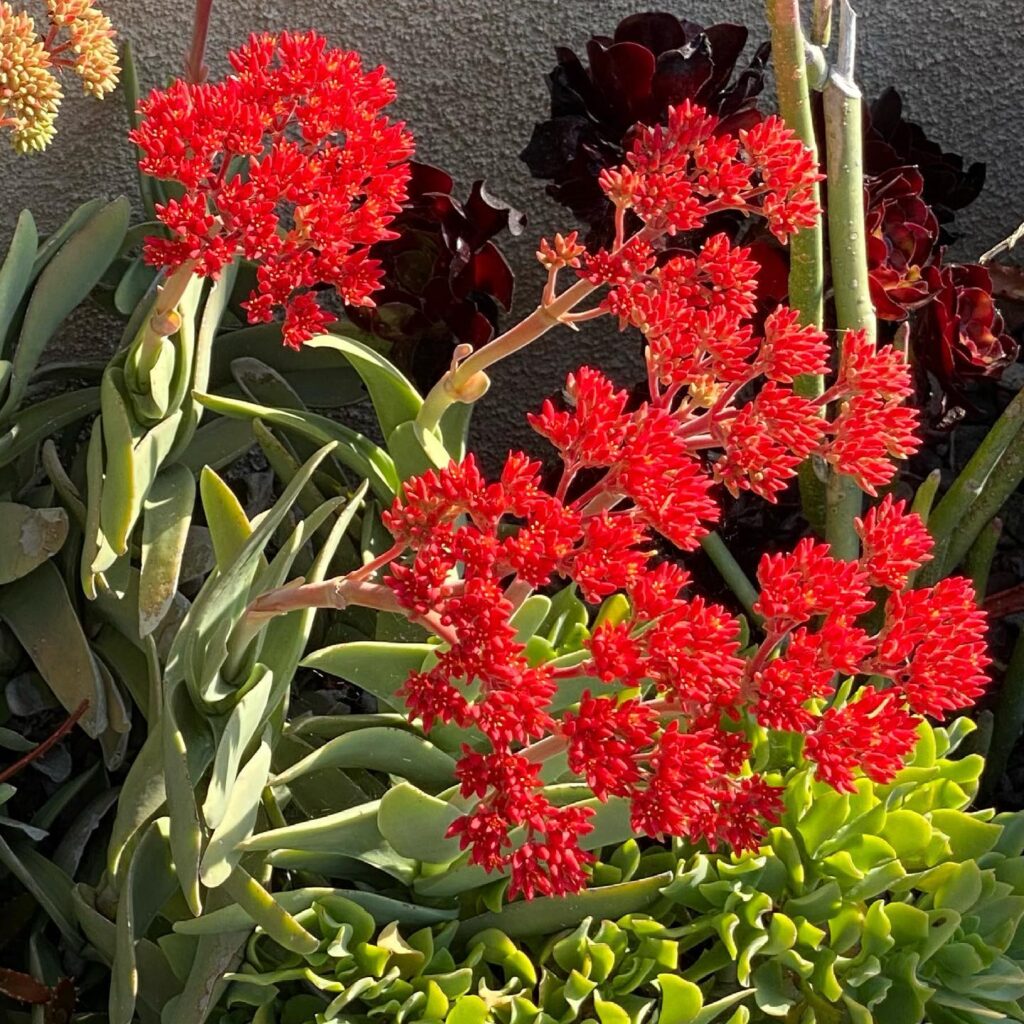
The gorgeous succulent Crassula Falcata originated from South Africa is a conspicuous type of jade plant with velvety, large, fleshy gray-green leaves that grow opposite each other in pairs and succulent stems shaped like airplane propellers, after which the plants got the name.
The propeller plant can grow up to two feet, and in the summer months, if it gets enough sun, it blooms with magnificent intense red flowers gathered in globular clusters.
Like other succulents, it is sensitive to low temperatures because its thick leaves deposit water which, at temperatures below freezing, turns into ice crystals that destroy the leaf tissue.
Therefore, the privilege of growing this plant outdoors is only for those who live in the US climate zone 9 or more, while in other parts, it can thrive planted in a pot and protected during the winter.
Baby’s Necklace Plant (Crassula Rupestris)
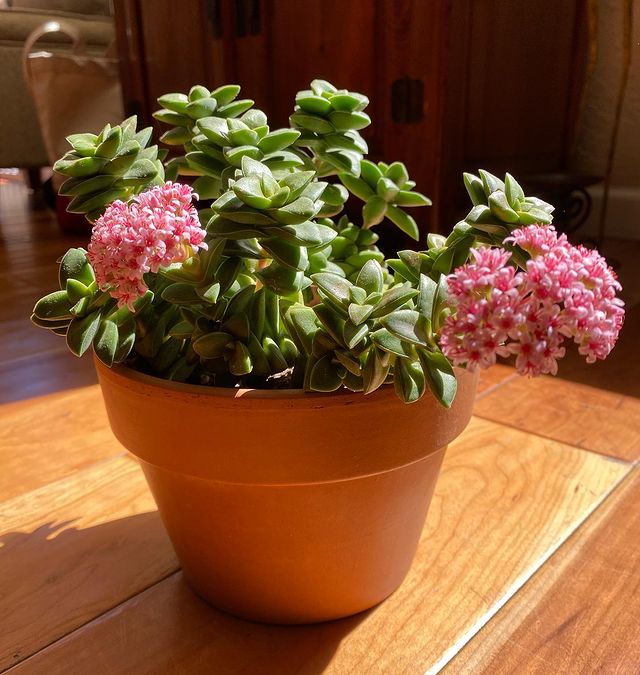
Another unique jade plant from the Crassulaceae family is the alluring succulent of tiny triangular leaves that grow compactly strung on thick stems, Crassula rupestris, commonly known as Baby’s Necklace Plant or Jade necklace.
The jade necklace is native to Cape Province in South Africa and has a multi-branched growth.
Although initially growing upright, the limbs eventually bend under the weight of the fleshy leaves, creating a weeping form ideal for growing in hanging pots.
Crassula rupestris, a baby’s necklace plant, grows outdoors in climate zones 9 to 11b, indoors in other, more excellent areas.
Crassula Rupestris blooms with white 0.25 inch wide white flowers.
Tiger Jade (Crassula Picturata)
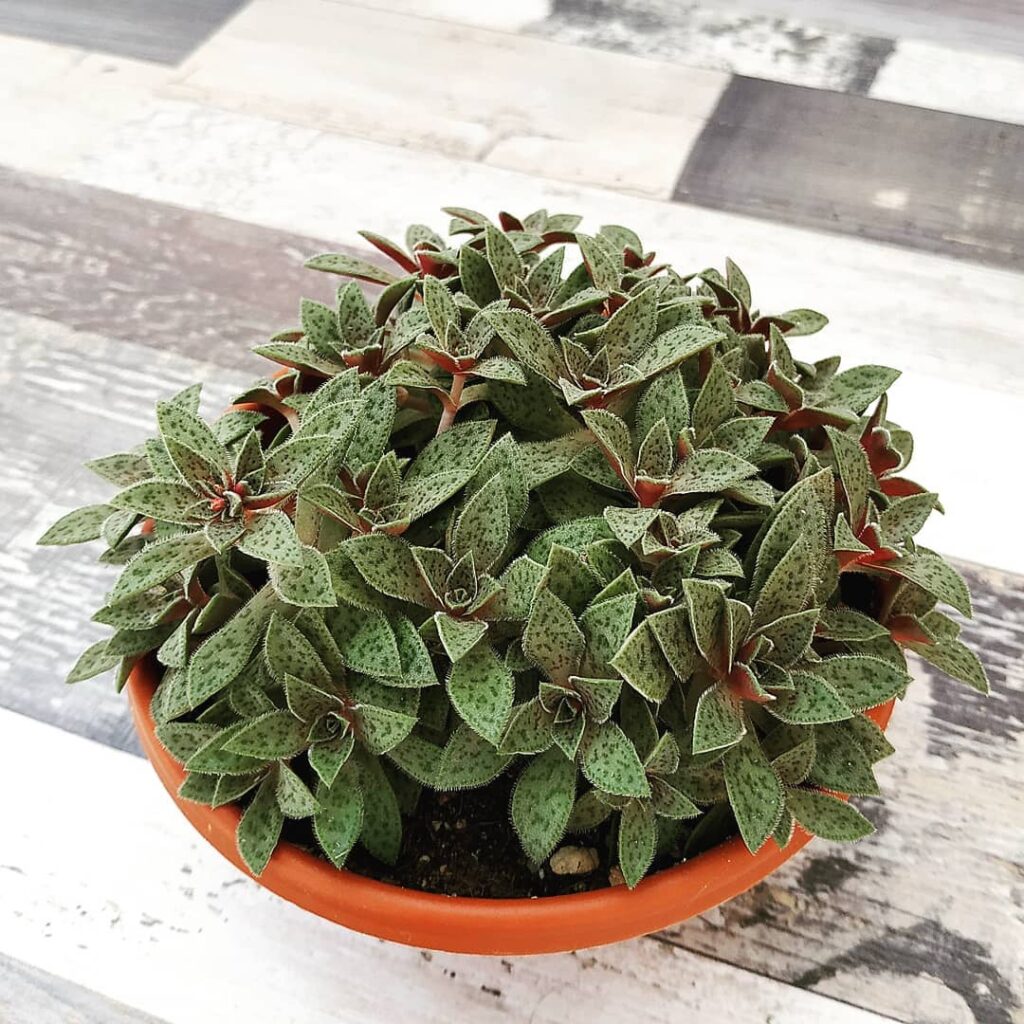
A small South African succulent linked to the jade plants family, Tiger Jade got its name after the dotted pattern on its thick and fleshy leaves.
The plant grows in the form of a low rosette composed of neatly arranged leaves with a broad base that tapers at the top and ends in a pronounced tip.
It’s lime green leaves usually have burgundy or plum-colored patterns. The plant gives many offsets close to the mother plant forming entire structures, and when they fill the pot, they grow into a creeping form. With a maximum height of three to five inches, this small plant blooms with tiny pink flowers.
Frequently Asked Questions
Q: Are the Chinese jade plant and Chinese money plant the same?
A: Yes, they are. Chinese money plant or Chinese jade plant are common names for Pilea peperomioides. Yet, the plant does not belong to the crassula genus
Q: Is the jade plant toxic for pets and humans?
All types of jade plants are slightly toxic to humans. The contact of the plant’s juices with the skin can cause irritation and itching. If swallowed, the leaf can cause vomiting and diarrhea.
Q: What is the rarest type of jade plant?
A: The rarest type of jade plant is the Wooly jade plant (Crassula Tomentosa), whose leaves have fine white hairs on the edges!
Q: How long do Crassula ovata live?
A: All Crassula ovata plants are long-lived species that can live from 50 to 70 years! However, the lifespan of each type of jade plant is determined by the words in which it grows and the way you take care of it.
What jade plant types did you like? Check out our other articles:
How To Propagate Jade Plant: Everything To Know







